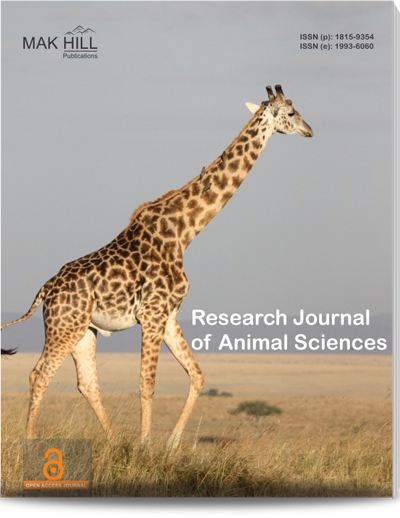
Research Journal of Animal Sciences
ISSN: Online 1994-4640ISSN: Print 1993-5269
122
Views
0
Downloads
Abstract
In recent years, substantial interest has arisen in fetal imprinting of adult disease. An animal model utilized to study this phenomenon is the pregnant ewe and her offspring. Such studies require the use of pregnant ewes and a way of determining if the animal is carrying a singleton because fetal growth is significantly affected by the presence of twins. The prediction of pregnancy status was based on field ultrasound, Scanopreg (Ithaco, Ithaca, New York, model #738), 60 days after breeding and compared to pregnancy predictions based on a single progesterone value. Fetal number was determined at the time of delivery or at surgery. Non- pregnant ewes had a mean progesterone level (standard deviation) of 2.04 (1.25) ng mL 1, singleton pregnancies were associated with a mean level of 5.44 (1.36) ng mL 1 and twins with a mean value of 7.14 (2.57) ng mL 1. Classification of sheep pregnancy status and fetal number was examined by considering rates of correct classification and error rates associated with misclassification, along with Receiver Operating Characteristic (ROC) analysis. Results showed that both ultrasound and progesterone are reasonable screens of pregnancy status, but progesterone alone is not sufficient for differentiating between singleton and twin-bearing ewes.
How to cite this article:
K. See , A.J. Bailer , E.J. Behnke , R.S. Baker , K.E. Clark and P.T. Russell . Predicting Pregnancy Status and Fetal Number in Time-Dated Pregnant Ewes Using Serum Progesterone and Ultrasound.
DOI: https://doi.org/10.36478/rjnasci.2007.65.71
URL: https://www.makhillpublications.co/view-article/1993-5269/rjnasci.2007.65.71